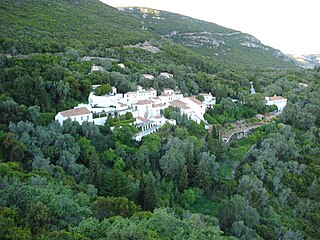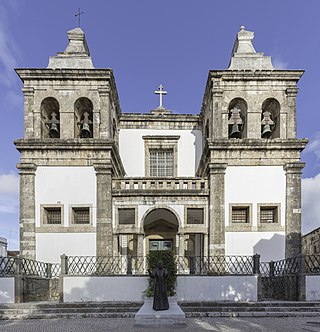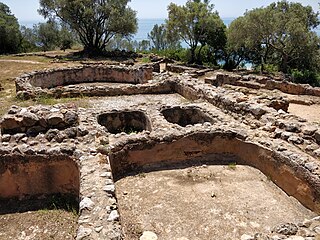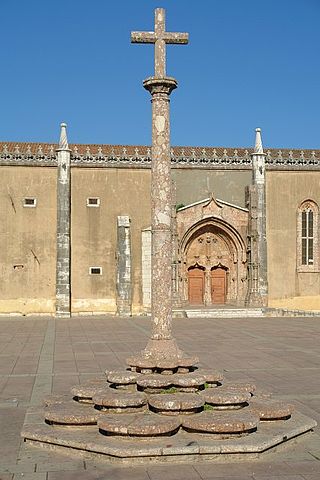7 Sights in Setúbal, Portugal (with Map and Images)
Legend
Premium Sights
Book tickets, guided tours and activities in Setúbal.
Guided Free Walking Tours
Book free guided walking tours in Setúbal.
Welcome to your journey through the most beautiful sights in Setúbal, Portugal! Whether you want to discover the city's historical treasures or experience its modern highlights, you'll find everything your heart desires here. Be inspired by our selection and plan your unforgettable adventure in Setúbal. Dive into the diversity of this fascinating city and discover everything it has to offer.
Sightseeing Tours in SetúbalActivities in Setúbal1. Igreja do Mosteiro de Jesus
The Monastery of Jesus is a historical religious building in Setúbal, Portugal, which served a monastery of Poor Clare nuns. It is one of the first buildings in the Manueline style, the Portuguese version of late Gothic. The cloisters of the complex houses a museum of the monastery. In 2013, pan-European heritage organization Europa Nostra declared the monastery to be one of the 7 most endangered monuments in Europe.
Wikipedia: Monastery of Jesus of Setúbal (EN), Heritage Website Sipa, Heritage Website
2. Convento de Nossa Senhora da Arrábida
The Convent of Nossa Senhora da Arrábida, Convent of Santa Maria da Arrábida or just Convent of Arrábida, was a convent of Franciscan religious that belonged to the Franciscan Province of Arrábida, located on the southern slope of the Serra da Arrábida, facing the sea, in the current municipality of Setúbal.
Wikipedia: Convento de Nossa Senhora da Arrábida (PT), Heritage Website Sipa, Heritage Website
3. Forte de São Filipe
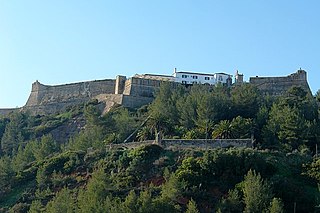
The Fort of São Filipe de Setúbal, also referred to as the São Filipe Castle or the São Filipe Fortress, is in the city of Setúbal in the Setúbal District, of Portugal. The fort was built on the orders of Philip II of Spain, who personally witnessed the laying of the cornerstone of the new fortification in 1582. It stands in a dominant position on the right bank of the mouth of the Sado River, overlooking the centre of Setúbal to its east and guarding access to the river. Named after the king during the Iberian Union, the fortress was designed by Giovan Giacomo Paleari Fratino and had the Italian military engineer Filipe Terzi, who worked for the Spanish Royal Court, as its chief engineer. It was completed in 1600 under the guidance of Leonardo Torreano due to the death of Terzi.
Wikipedia: Fort of São Filipe de Setúbal (EN), Heritage Website Sipa, Heritage Website
4. Igreja de Santa Maria da Graça
The Our Lady of Grace Cathedral also called Setúbal Cathedral is the name given to a religious building affiliated with the Catholic Church that works as the Cathedral of Setúbal, a city in Portugal. It is located in the heart of the primitive medieval town of Setúbal, around which the most important medieval district of the city as well as the religious and administrative center developed.
Wikipedia: Our Lady of Grace Cathedral, Setúbal (EN), Heritage Website
5. Fábrica de Salga de Peixe do Creiro
The Roman ruins of Creiro are situated in the Arrábida Natural Park above Creiro Beach in the Setúbal District of Portugal. They are ruins of a fish-salting factory and Roman baths, dating back to the days when the province of Lusitania formed part of the Roman Empire.
Wikipedia: Roman ruins of Creiro (EN), Heritage Website Arqueologia, Heritage Website Sipa
6. Cruzeiro de Setúbal
The Cruzeiro de Setúbal or Cruzeiro do Largo de Jesus is located in Largo de Jesus in front of the Church of the former Monastery of Jesus, in the old parish of São Julião, in the municipality of Setúbal, district of Setúbal, Portugal.
Wikipedia: Cruzeiro do Largo de Jesus (PT), Heritage Website Sipa, Heritage Website
7. Farol da Azeda
The Azeda Lighthouse went into operation on 6 June 1940 at the Quinta da Azeda in Setúbal, in Setúbal District, Portugal. Initially the light was mounted in a hut on a hill but new housing construction made it difficult to see and in 1996 a 31-metre tall cylindrical tower was constructed. The lighthouse is situated about 3 kilometres inland. In addition to supporting the light, the tower also functions as a water tower for the town of Setúbal.
Share
How likely are you to recommend us?
Disclaimer Please be aware of your surroundings and do not enter private property. We are not liable for any damages that occur during the tours.

